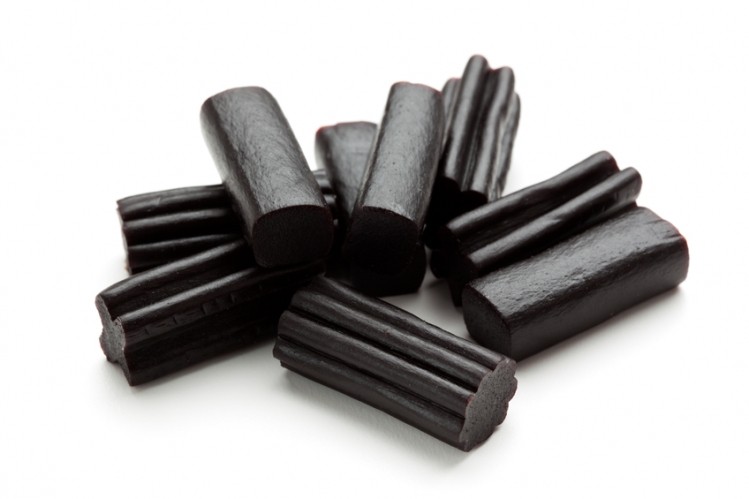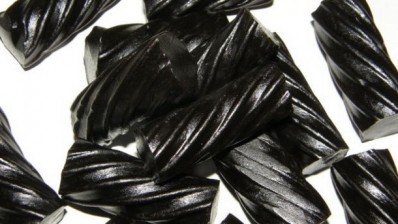'It appears that no safe exposure during human pregnancy exists'
Eating liquorice while pregnant is comparable to prenatal binge drinking: Study

The sweet-tasting component of liquorice, glycyrrhizin acid, has been shown to cause long-lasting functional and structural changes in children if overexposed to it prenatally, including poor memory and lower intelligence.
The study, published in the American Journal of Epidemiology, showed similar effects to previous studies on the effects of maternal binge drinking while pregnant on offspring.
Katri Räikkönen, leading researcher for the study, said: “The present findings suggest that pregnant women should be informed that consumption of liquorice and other food products containing glycyrrhizin may be associated with harm for their developing offspring.”
The researchers from the University of Helsinki concluded: “Due to the associations between maternal glycyrrhizin intake and pubertal maturation in girls and cognition and attention deficit / hyperactivity disorder problems in both girls and boys, being linear, it appears that no safe exposure during human pregnancy exists.”
Glycyrrhizin acid is also added to other food products, however the primary source is liquorice, where it occurs naturally.
Currently there are no nutritional recommendations for safe levels of glycyrrhizin consumption while pregnant. The World Health Organisation (WHO) recommends a maximum intake of 2 mg per kg.
In 2015 a 10-year-old Italian boy was admitted to hospital after suffering from seizures caused by overeating glycyrrhizin acid in liquorice.
Long lasting detrimental effects
The researchers looked at women who had eaten liquorice during their pregnancy, and showed that children who had higher levels of glycyrrhizin exposure performed significantly lower in cognitive tests.
The effects of the exposure included general intelligence, language, memory, visuospatial processing, behavioural problems, inattention problems and fairly widespread brain dysfunction, causing researchers to believe the hippocampus region of the brain is especially targeted.
Glycyrrhizin acid inhibits the placenta ‘barrier’ enzyme, 11β-hydroxysteroid dehydrogenase type 2 (11β-HSD2), thus allowing overexposure of glucocorticoids to the foetus, they say.
It is this overexposure that is “the key mechanism” in programming changes in the brain and its control of behaviours and reproductive functions, says the study.
Premature puberty & liquorice link
The study also revealed that prenatal exposure of glycyrrhizin acid can cause premature puberty, with results being more significant in girls.
On average girls from the high exposure group were 3 cm taller – representing an earlier growth spurt and less remaining growth potential – 8 kg heavier and had a higher Body Mass Index (BMI) of 2.2, compared to the female children from the low exposure group.
However, there were no associations between maternal liquorice consumption during pregnancy and pubertal maturation in boys.
General, verbal and performance IQ scales on word generation, design fluency, narrative memory and memory of faces were tested for cognition, with the children in the high exposure group scoring significantly lower than the children in the low exposure group.
The high exposure group also had higher odds of attention deficit/hyperactivity disorder.
The study
The study looked at 378 Finnish women and their offspring born in 1998. Almost 50% of the women reported that they had eaten liquorice during their pregnancy.
The groups looked at were low exposure (0 -249 mg of glycyrrhizin per week) and high exposure (≥500 mg glycyrrhizin per week).
A list of all liquorice-containing confectionary available in Finland was prepared by the National Food Administration in 1993 and given to the participants in 1998 in order for them to report which brands they had consumed.
The methods of testing pubertal maturation were based on three measures of growth and development: the difference between the child’s height for age standard deviation score and the standard deviation score of the midparental target height (a measure of remaining growth potential and the timing of the pubertal growth spurt); the Tanner staging questionnaire administered by a research nurse, testing pubic hair growth, breast development and male genitalia development; and the Pubertal Development Scale – a self-report of secondary sex characteristics, including growth spurt, hair that is not necessarily pubic hair, skin changes, menarche and breast development in girls and facial hair and voice changes in boys.
Source: American Journal of Epidemiology
“Maternal Licorice Consumption during Pregnancy and Pubertal, Cognitive and Psychiatric Outcomes in Children”
Published online ahead of print, doi: 10.1093/aje/kww172
Authors: Katri Räikkönen et al.

























